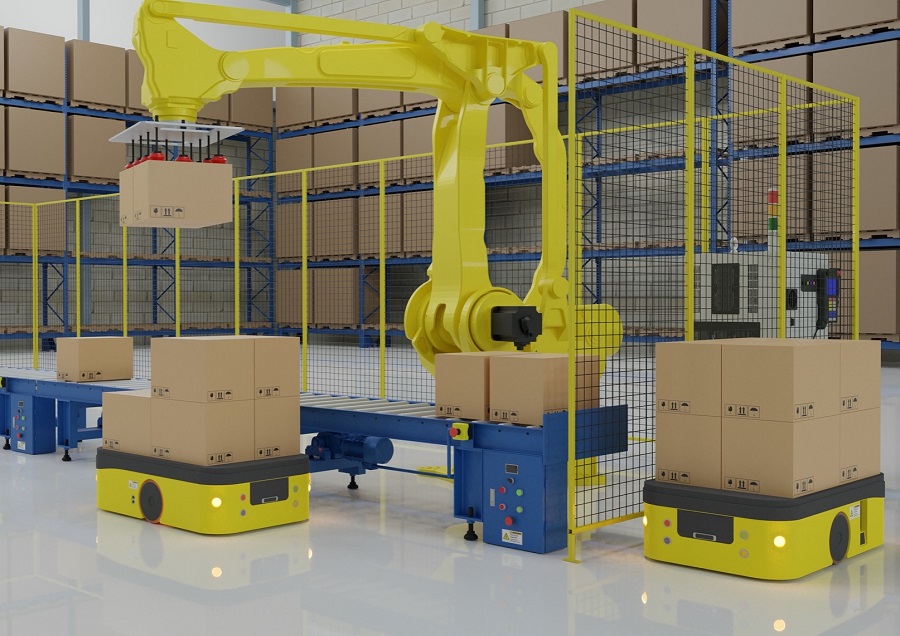Automation & Digital Transformation
Automatic equipment in a manufacturing, warehousing and distribution, Industrial and Autonomous research robots, Robotic process automation (RPA) and other processes or facilities.Mass robot potential for UK logistics SMEs in next 3 years

A huge range of robot technologies that were considered experimental a few years ago, are now commercially viable for small and medium sized enterprises (SME’s) in the logistics and warehousing field according to a recent analysis from global robot hub HowToRobot.com.
The study estimates that robots will be a feasible option for more than 50% of SMEs within the next three years1 due to a global trend towards “proven robotics” which has reduced both the cost and complexity of implementing robots.
The analysis identified the three key factors driving the trend:
- A range of robot technologies have reached a mature stage – the global warehouse automation market has increased to USD15.59 in 2021 and is expected to surpass USD 30 billion by 2026.
- Prices of robot technology are falling – by 2025 prices are expected to have fallen by 76% since 2010.
- Global availability of suppliers and solutions has more than doubled in the last twenty years.
Commenting on the findings, CEO of HowToRobot.com, Søren Peters said: “The robot market has reached a pivotal moment for small and medium sized businesses. SME’s have been hesitant to invest in robotics because of the price and complexity of the technology. Automation used to be exclusively for custom machine builders, developing a new solution for every project. In the last five years however, many new robot technologies have reached a level of maturity and price point where they can be standardised, meaning lower cost and quicker implementation. Logistics and warehousing SMEs can now adopt these technologies on a larger scale.”
Examples of new robotic solutions entering the commercial stage include Autonomous Mobile Robots (AMRs) that can navigate freely in environments with people and handle a range of logistics tasks. Also, pick and place robots that used to handle only large volume production, can now handle small batches more commonly needed by SME’s. Additionally, the market for collaborative robots is expected to grow by 30% per year (CAGR) from 2020-25.5 Other growth areas are packing, palletising, machine tending and others where SMEs often lack people or need to cut costs.
Although the density of robots in factories around the world has increased by 71% in just four years,6 most manufacturing companies are still not using robots.7 HowToRobot.com’s analysis further revealed that knowledge of these technologies is still very limited and that only 1 in 5 SMEs conduct proper market research prior to investing in robotics.
“Very few businesses are fully aware of what’s available in the market today, hence the same solutions are often reinvented through expensive and time-consuming development projects,” says Peters.
“In addition, the technology supply locally is often very limited which has historically held back investments. But we see an increasing trend of companies sourcing robots and related services from the fast-growing global market. The rise of digital marketplaces is opening up the global robot market for SMEs,” he adds.










